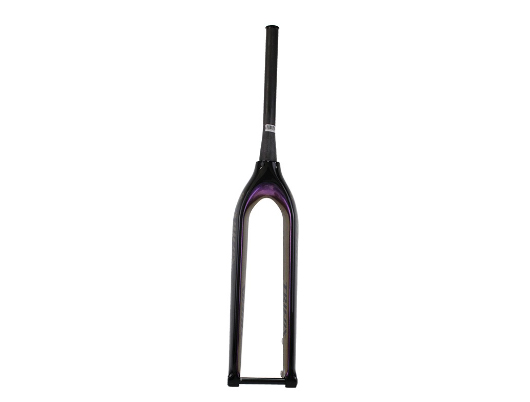
Choosing the right forks for your mountain bike (MTB) can significantly impact your ride quality, handling, and overall biking experience. This is especially true for 29er MTBs, which are designed to roll over obstacles more easily than their smaller-wheeled counterparts. With a plethora of options available on the market, selecting the best forks can be a daunting task. Understanding Fork Types Before diving into specific features, it's essential to understand the two primary types of forks available for MTBs: Rigid Forks: These forks have no suspension and are typically lighter and simpler. They are suitable for smoother trails and riders who prioritize weight savings and simplicity;Suspension Forks: These forks come with built-in shock absorbers, which help absorb impacts from rough terrain, making them ideal for aggressive trail riding and downhill adventures. Key Factors to Consider 1. Material The material of the fork plays a crucial role in its performance, weight, and durability. The Trifox carbon bike forks, for instance, are made from high-grade carbon fiber, which offers several advantages: Lightweight: Carbon fiber is much lighter than steel or aluminum, reducing the overall weight of your bike;Strength and Durability: Despite its lightness, carbon fiber is incredibly strong and durable, capable of withstanding the rigors of intense off-road riding;Vibration Damping: Carbon fiber naturally absorbs vibrations, providing a smoother ride on rough terrain. 2. Travel Travel refers to the amount of movement a suspension fork can accommodate. It’s measured in millimeters and indicates how much the fork can compress. Here’s a quick guide to help you choose the appropriate travel for your riding style: 80-100mm: Suitable for cross-country riding, offering efficiency and lightweight performance;120-140mm: Ideal for trail riding, providing a balance between uphill efficiency and downhill capability;150mm+: Best for enduro and downhill riding, offering maximum absorption for rough and technical terrain. 3. Compatibility Ensure that the fork you choose is compatible with your bike’s frame and components. Key compatibility considerations include: Wheel Size: Make sure the fork is designed for 29-inch wheels;Steerer Tube Diameter: Common diameters are 1-1/8” straight and 1.5” tapered. Check your bike’s head tube specifications;Axle Type and Size: Standard sizes include 9mm quick release and 15mm or 20mm thru-axles. Verify your hub’s specifications. 4. Adjustability Modern suspension forks often come with various adjustability features to customize the ride feel: Rebound Adjustment: Controls the speed at which the fork returns to its original position after compressing;Compression Adjustment: Allows you to fine-tune the fork’s compression rate, affecting how it absorbs impacts;Lockout: A feature that locks the suspension, transforming it into a rigid fork for efficient climbing or road riding. 5. Weight Weight is a critical factor, especially if you’re a competitive rider or frequently tackle long climbs. Carbon fiber forks, like those from Trifox, offer significant weight savings without compromising strength and performance. Lighter forks improve acceleration, climbing efficiency, and overall agility. 6. Price and Value While top-tier forks come with a higher price tag, they also offer advanced features, superior materials, and better performance. Evaluate your budget and identify the key features that will enhance your riding experience. The Trifox carbon bike forks strike an excellent balance between performance, durability, and cost, making them a great option for serious riders. Why Choose Trifox Carbon Bike Forks? Trifox carbon bike forks are a standout choice for several reasons: Superior Material: Made from high-grade T800 carbon fiber, these forks combine light weight with exceptional strength and durability;Precision Engineering: Trifox forks are meticulously designed to provide optimal performance, whether you're tackling technical trails or cruising smooth singletracks;Versatility: Compatible with a wide range of bikes and components, Trifox forks offer broad customization options to suit your specific needs;Value for Money: Offering premium features at a competitive price point, Trifox carbon bike forks deliver excellent value for both amateur enthusiasts and seasoned riders. Conclusion Choosing the right forks for your MTB 29 is essential for optimizing your bike's performance and ensuring a smooth, enjoyable ride. By considering factors such as material, travel, compatibility, adjustability, weight, and price, you can make an informed decision that meets your specific riding needs. Trifox carbon bike forks provide a compelling option, offering advanced features and exceptional performance at a reasonable cost. Invest in the right forks, and elevate your mountain biking experience to new heights!
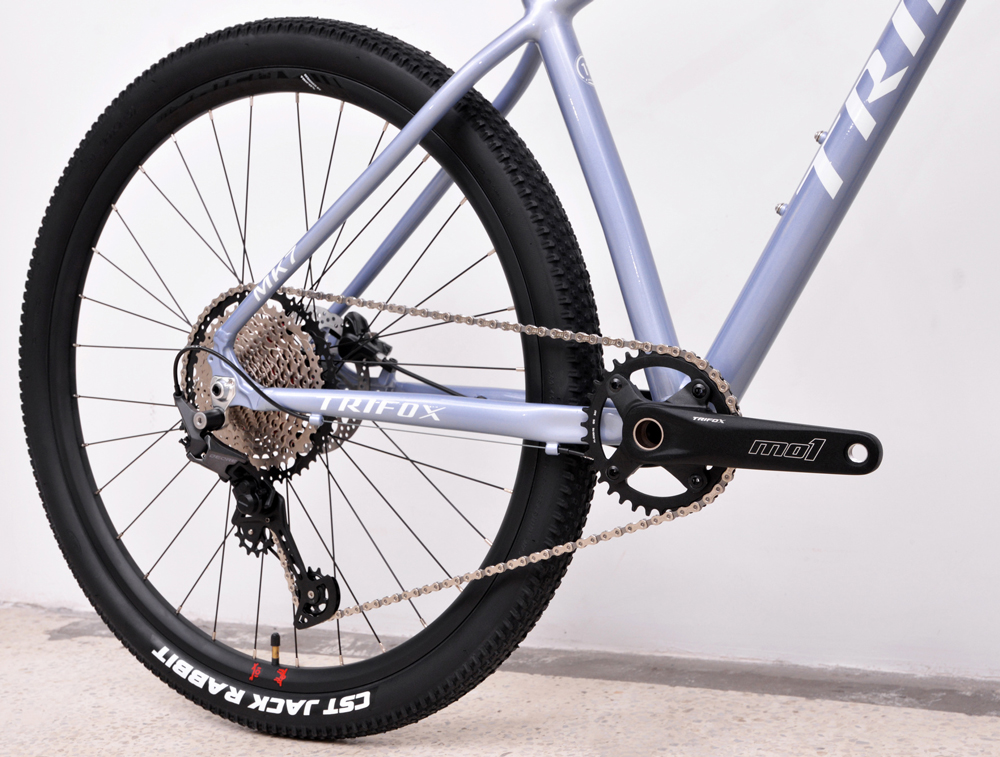
Maintaining your bicycle's wheel integrity is crucial for a smooth and safe ride. One of the key aspects of wheel maintenance is ensuring that the spokes are properly tightened. Loose or unevenly tensioned spokes can lead to wobbly wheels, poor handling, and even catastrophic failure over time. Understanding Bicycle Spokes and Wheel Tension Before diving into the process, it’s essential to understand the role of spokes in your bicycle wheel. Spokes connect the wheel hub to the rim, distributing the weight evenly and maintaining the wheel's shape. Proper spoke tension ensures that the wheel remains true (straight) and can withstand the forces exerted during riding. Tools You'll Need To tighten your bicycle spokes, you’ll need the following tools: Spoke Wrench: A small tool used to adjust the tension of the spokes.Truing Stand: Optional but helpful for more precision; otherwise, you can use your bike frame;Tension Meter: Optional but useful for measuring spoke tension accurately;Marker or Tape: To mark the starting point on the wheel for reference. Step-by-Step Guide to Tightening Bicycle Spokes Step 1: Prepare Your Bike Flip Your Bike: Turn your bike upside down or place it on a bike stand to elevate the wheels off the ground. This will allow the wheels to spin freely;Remove the Tire: If you’re using a truing stand, remove the tire to get a clear view of the rim. For casual adjustments, you can leave the tire on. Step 2: Identify Loose Spokes Spin the Wheel: Spin the wheel slowly and look for any wobbles or deviations from its straight path. Pay attention to spots where the rim gets closer or further away from the brake pads;Check Spoke Tension: Squeeze pairs of spokes together with your fingers. Loose spokes will feel noticeably different compared to properly tensioned ones. Step 3: Mark the Starting Point Use a marker or tape to mark the spot on the rim where you’ll begin adjustments. This helps ensure you don’t miss any spokes and maintains an organized approach. Step 4: Tighten the Spokes Turn the Spoke Wrench: Place the spoke wrench on the nipple (the part that connects the spoke to the rim). Turn it clockwise to tighten the spoke. Start with small adjustments, about a quarter-turn at a time;Alternate Spokes: Always alternate between spokes on either side of the wheel to maintain balance. Tighten a spoke on one side, then move to the opposite side;Check Progress: After adjusting a few spokes, spin the wheel again to check for improvements. Continue making small adjustments until the wheel is true. Step 5: Fine-Tuning Minor Adjustments: If the wheel is still not perfectly true, make minor adjustments to individual spokes. Tighten spokes on the side where the rim deviates inward and loosen those where it deviates outward;Check Tension: Use a tension meter if available to ensure all spokes have uniform tension. Proper tension will vary depending on the wheel type, so refer to the manufacturer’s specifications if needed. Step 6: Final Checks Recheck Alignment: Spin the wheel one last time to ensure it is perfectly true and free of wobbles;Secure Spoke Nipples: Ensure that all spoke nipples are securely tightened. Loose nipples can unwind during a ride, causing the spokes to lose tension. Step 7: Reassemble and Test Ride Replace the Tire: If you removed the tire earlier, reattach it now;Test Ride: Take your bike for a short test ride to ensure everything feels right. Listen for any unusual sounds and check for any wobbling in the wheels. Additional Tips for Maintaining Spoke Tension Regular Maintenance: Regularly check your spokes for tension and alignment. Addressing loose spokes early can prevent more significant issues;Avoid Over-tightening: Over-tightening spokes can cause them to snap or put too much stress on the wheel, leading to potential damage;Consistency is Key: Aim for consistent tension across all spokes to prevent imbalances that can affect the wheel's performance. Conclusion Tightening bicycle spokes may seem like a daunting task, but with patience and the right tools, it becomes a manageable and rewarding aspect of bike maintenance. By following this step-by-step guide, you can ensure your wheels remain true, providing a smoother and safer ride. Regularly checking and maintaining your spoke tension will extend the life of your wheels and enhance your overall cycling experience. Happy riding!
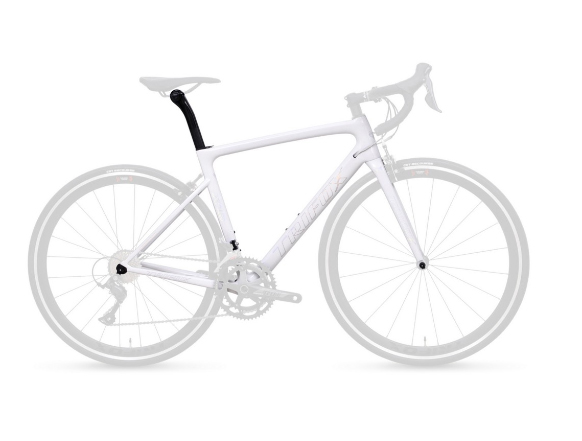
Achieving the perfect fit for your road bike is essential for comfort, efficiency, and injury prevention. A well-fitted bike allows you to ride longer distances with ease while maximizing your performance. Here’s a comprehensive guide to help you get the ideal fit for your road bike. 1. Frame Size Matters The foundation of a great fit starts with the right frame size. Trifox carbon road bike frames offer various sizes designed to cater to different body types and riding styles. Ensure the frame size corresponds to your height and inseam measurements. A proper fit frame will allow for adequate stand-over clearance and reach. 2. Saddle Height and Position Setting your saddle height correctly is crucial for efficient pedaling and knee health. When seated, your leg should be almost fully extended at the bottom of the pedal stroke, with a slight bend in the knee. Adjust the saddle position so that your knees align with the pedal axles when viewed from the side. This alignment helps in maintaining an efficient and comfortable pedal stroke. 3. Handlebar Reach and Drop Handlebar reach affects your posture and control on the bike. You should be able to comfortably reach the handlebars without overextending or feeling cramped. The handlebars should be set at a height where you can maintain a slight bend in your elbows, promoting a relaxed upper body position. The drop from the saddle to the handlebars should correspond to your flexibility and riding style—less flexible riders may prefer a smaller drop. 4. Cleat Positioning If you use clipless pedals, proper cleat positioning is key. Align the cleats so that the ball of your foot is directly over the pedal axle. This positioning ensures optimal power transfer and reduces strain on your knees. 5. Fine-Tuning Even after setting up the basics, fine-tuning is often necessary. Adjustments like saddle tilt, handlebar angle, and stem length can make significant differences in comfort. Small tweaks can always be made based on how you feel during your rides. 6. Professional Bike Fitting For the ultimate fit, consider getting a professional bike fitting. An expert can analyze your body mechanics and make precise adjustments to optimize your bike fit. This service is especially beneficial for competitive cyclists or those who experience discomfort despite making basic adjustments. Conclusion Achieving the perfect fit for your road bike involves careful consideration of frame size, saddle height and position, handlebar reach and drop, and cleat positioning. Regular fine-tuning and professional fittings can further enhance your comfort and performance. For high-quality frames that can be adjusted to meet your specific needs, check out the Trifox carbon road bike frames. With the right fit, you'll enjoy a more comfortable, efficient, and enjoyable ride every time.
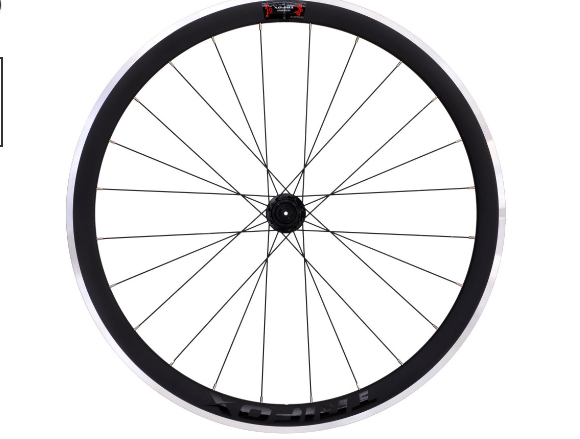
Choosing the best high-end aluminum wheels for your bike is a critical decision that can significantly impact your ride's performance, comfort, and durability. High-end aluminum wheels offer a balance of strength, weight savings, and cost-effectiveness, making them a popular choice among cyclists. Here’s how to select the perfect set for your needs. 1. Understand Your Riding Style Before diving into specifics, consider your primary riding style: Mountain Biking: If you frequently tackle rough terrains and trails, you'll need robust wheels that can withstand heavy impacts and provide excellent traction;Road Cycling: For road cycling, lightweight wheels with low rolling resistance are essential for speed and efficiency;Commuting: Durability and reliability are key for daily commuting, as you’ll need wheels that can handle varied conditions and frequent use. 2. Evaluate Wheel Specifications When looking at high-end aluminum wheels, pay attention to the following specifications: Rim Width and Depth: Wider rims offer better stability and can accommodate a range of tire sizes, while deeper rims improve aerodynamics;Spoke Count: More spokes generally mean stronger wheels, which is crucial for mountain biking or heavier riders;Hub Quality: High-quality hubs, like those found in Trifox mountain bike wheels, ensure smooth rotation and long-term reliability. 3. Check Material and Construction High-end aluminum wheels are typically made from advanced alloys that offer a great balance of weight and strength. Look for wheels with features such as reinforced spoke holes and welded seams for added durability and performance. 4. Seek Expert Reviews and Recommendations Consulting expert reviews and recommendations can provide valuable insights into the performance and reliability of specific wheel models. Many cycling forums and review sites offer detailed assessments from experienced riders. 5. Consider Price and Warranty High-end aluminum wheels can be a significant investment, so consider your budget carefully. Look for brands that offer a good warranty, as this can protect you against manufacturing defects and give you peace of mind. 6. Test Ride if Possible If you have the opportunity, test ride a bike with the wheels you're considering. This firsthand experience can help you feel the difference in performance and ensure the wheels meet your expectations. Conclusion Selecting the best high-end aluminum wheels for your bike involves understanding your riding style, evaluating key specifications, checking material and construction quality, seeking expert opinions, considering price and warranty, and ideally, test riding. For top-notch options, explore the Trifox mountain bike wheels, known for their durability and performance. With the right wheels, you can enhance your cycling experience and enjoy smoother, more efficient rides.
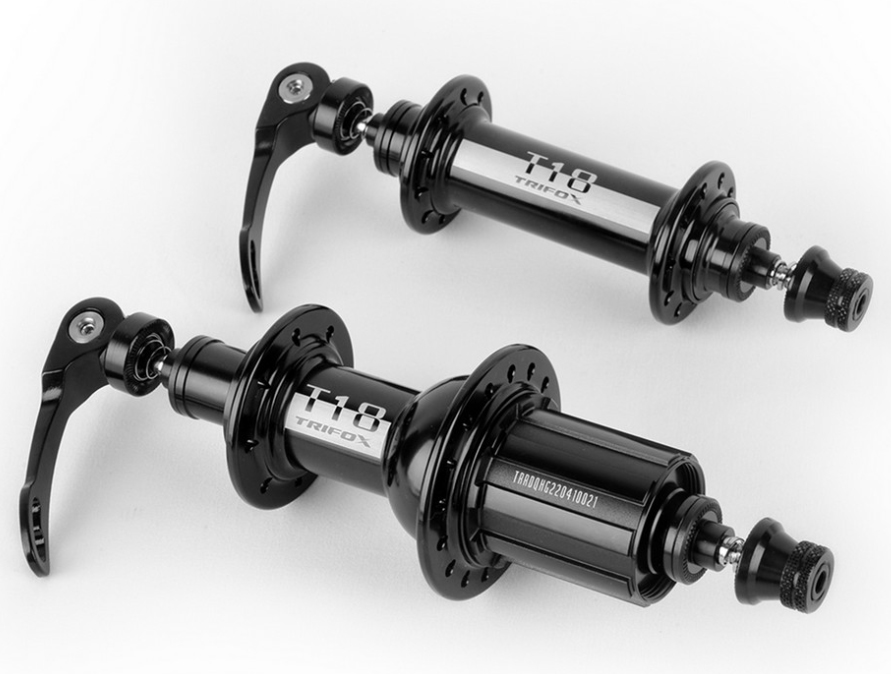
Maintaining and upgrading your Trifox freehub is essential for ensuring smooth, reliable performance on the trails and roads. Proper maintenance can extend the life of your components, while timely upgrades can enhance your riding experience. Importance of Regular Maintenance Regular maintenance of your freehub is crucial for several reasons: Performance: A well-maintained freehub ensures smooth and efficient power transfer from your pedals to the wheels;Durability: Routine care prevents premature wear and tear, extending the lifespan of your freehub;Safety: Properly functioning components reduce the risk of accidents caused by sudden mechanical failures. Steps to Clean and Lubricate Your Freehub Remove the Freehub: Start by removing the rear wheel from your bike. Use a wrench to carefully unscrew the freehub from the hub body;Clean Thoroughly: Wipe down the freehub with a clean cloth to remove dirt and grime. Use a degreaser to clean the internal parts, ensuring all old lubricant and debris are eliminated;Inspect for Wear: Check the pawls and ratchets for signs of wear or damage. Look for any cracks or chips in the freehub body;Lubricate: Apply a light layer of freehub-specific lubricant to the pawls and ratchets. Avoid over-lubricating, as excess grease can attract dirt and cause buildup;Reassemble: Carefully reassemble the freehub and reinstall it onto the rear wheel. Ensure all parts are securely tightened. Signs of Wear and When to Upgrade Even with regular maintenance, freehubs can wear out over time. Here are some signs that it might be time to upgrade: Noise: Unusual clicking or grinding noises indicate worn out or damaged pawls and springs;Slippage: If your pedals slip under pressure, the freehub's engagement mechanism may be failing;Difficulty Shifting: Hard-to-shift gears can signal internal issues within the freehub body. Benefits of Upgrading Upgrading to a higher-quality Trifox freehub offers several benefits: Improved Performance: Enhanced engagement mechanisms provide quicker and more precise power transfer;Increased Durability: High-quality materials and construction mean longer-lasting components;Better Riding Experience: Smoother operation and reduced noise contribute to a more enjoyable ride. Conclusion Maintaining and upgrading your Trifox freehub is a vital part of bike upkeep. By regularly cleaning and lubricating your freehub, inspecting for signs of wear, and upgrading when necessary, you ensure optimal performance and longevity. For a wide range of high-quality bike components, including freehubs, visit TrifoxBike. Keep your bike running smoothly and enjoy every ride to the fullest!
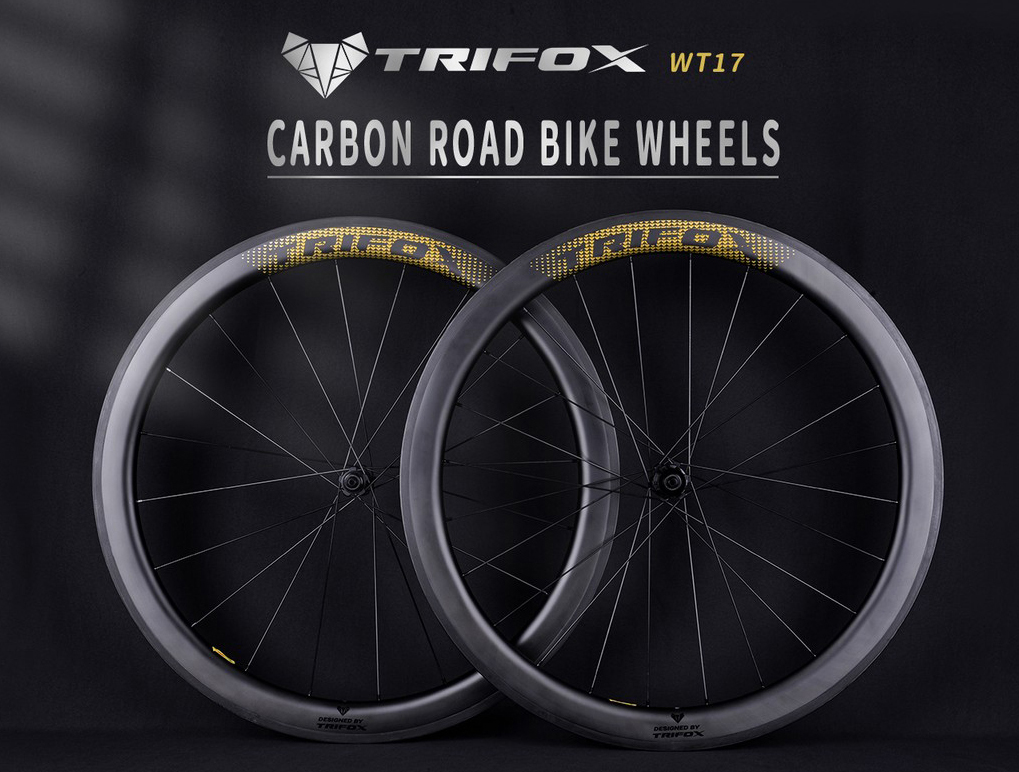
Selecting the right tire width for your climbing bike can make a significant difference in your performance, comfort, and overall riding experience. Whether you're tackling steep ascents or long, winding hill rides, choosing the optimal tire width is crucial. Here’s a guide to help you make an informed decision. 1. Understand Tire Width Basics Tire width affects various aspects of your ride, including rolling resistance, traction, and comfort. Narrower tires generally offer lower rolling resistance, making them faster on smooth surfaces. Wider tires provide better traction and comfort, especially on rough terrain. The key is to strike a balance that suits your climbing needs. 2. Consider Your Terrain The type of terrain you typically ride on plays a significant role in determining the optimal tire width. Smooth Pavement: If most of your climbs are on well-paved roads, narrower tires (23-25mm) might be ideal. They reduce rolling resistance, making it easier to sustain higher speeds;Mixed Surfaces: For climbs that include both pavement and rougher sections, slightly wider tires (25-28mm) can offer a good balance. They provide enough grip and comfort without sacrificing too much speed;Gravel or Rough Terrain: If your climbs often take you off-road, opt for even wider tires (28-32mm). These tires will provide the necessary traction and cushioning to handle uneven surfaces effectively. 3. Assess Your Riding Style Your personal riding style also influences the choice of tire width. Speed-Oriented Climbers: If you prioritize speed and efficiency, narrower tires may be more suitable. They help you maintain a brisk pace, especially on smooth climbs;Comfort-Focused Riders: If you value a more comfortable and stable ride, particularly on longer climbs, wider tires are better. They absorb more road vibrations and provide a smoother ride. 4. Factor in Bike Compatibility Ensure that your bike frame and rims can accommodate your chosen tire width. Check the manufacturer's specifications for the maximum tire width your bike can handle. Using tires that are too wide for your frame can lead to clearance issues and potentially damage your bike. 5. Experiment and Adjust Ultimately, finding the optimal tire width might require some experimentation. Start with a width recommended for your typical terrain and riding style. Pay attention to how your bike handles and feels during climbs. Don’t hesitate to make adjustments if necessary. Conclusion Choosing the optimal tire width for your climbing bike is a balance between rolling resistance, traction, comfort, and compatibility. By considering the terrain, your riding style, and bike specifications, you can find the perfect tire width to enhance your climbing performance and enjoyment. Happy climbing!

Choosing the right front suspension for your bike can significantly enhance your riding experience, whether you're tackling technical trails, cruising through city streets, or exploring gravel paths. The correct suspension setup improves comfort, control, and performance, tailored specifically to your riding style. 1. Understand Your Riding Style Cross-Country (XC) If you're into cross-country riding, which involves long-distance rides over varied terrain with a focus on speed and efficiency, you’ll benefit from a lightweight suspension fork. XC riders typically prefer front suspensions with 80-100mm of travel. This range provides enough cushioning for bumps and roots while keeping the bike nimble and efficient for climbing and long rides. Trail Riding For those who enjoy trail riding, which encompasses a mix of uphill, downhill, and technical sections, a versatile suspension fork with 120-140mm of travel is ideal. This setup offers a balance between climbing efficiency and downhill control, absorbing larger impacts and providing better stability on rough terrain. Enduro Enduro riders face more demanding descents and technical trails, requiring robust and responsive suspension. Forks with 150-180mm of travel are common in enduro bikes, offering maximum impact absorption and control at high speeds over challenging terrain. These forks are generally heavier but provide the durability needed for aggressive riding. Downhill (DH) For downhill enthusiasts who prioritize descending over all else, suspension travel extends from 180mm to over 200mm. These heavy-duty forks are designed to handle big jumps, drops, and rugged terrain at high speeds. They offer unparalleled control and stability but are less efficient for climbing due to their weight and travel. 2. Suspension Types: Air vs. Coil Air Suspension Air suspension forks use an air chamber to provide spring force. They are lighter and more adjustable than coil forks, making them popular among a wide range of riders. By adjusting the air pressure, you can fine-tune the suspension to your weight and preferred ride feel. Coil Suspension Coil suspension forks use a metal coil spring. They are generally heavier but offer consistent performance over prolonged periods and under extreme conditions. Coil forks are often favored by downhill and enduro riders for their plushness and reliability, especially in rough and repeated impacts. 3. Key Features to Consider Adjustability Look for forks with adjustable compression and rebound damping. Compression damping controls how the fork reacts to impacts, while rebound damping manages how quickly the fork returns to its original position after compression. Adjustable forks allow you to customize your suspension to different trails and conditions. Lockout A lockout feature allows you to rigidly lock the fork, reducing or eliminating suspension movement. This is particularly useful for climbing or riding on smooth surfaces where suspension bob can waste energy. Travel Adjust Some forks offer adjustable travel, enabling you to change the amount of suspension travel based on the trail. This feature adds versatility, allowing one fork to adapt to various riding styles and terrains. Weight Consider the weight of the suspension fork, especially if you’re into cross-country or trail riding where climbing efficiency is critical. Lighter forks enhance your overall bike performance and reduce fatigue over long distances. Conclusion Selecting the best front suspension for your bike involves understanding your riding style, choosing the right type of suspension, considering key features like adjustability and weight, and balancing your budget. By tailoring the front suspension to your specific needs, you’ll improve your riding experience, comfort, and performance, ensuring you get the most out of every ride. Happy trails!
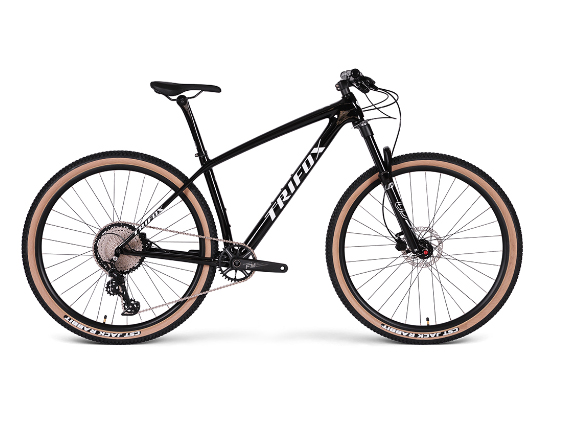
Selecting the perfect racing bike frame is a crucial step toward optimizing your cycling performance. The frame is the backbone of your bike, influencing everything from weight and aerodynamics to comfort and handling. With numerous options available, making the right choice can be daunting. 1. Material Matters The material of the bike frame significantly affects its performance characteristics. Here are the most common materials used in racing bike frames: Carbon Fiber Carbon fiber is the material of choice for high-performance racing bikes. It offers an excellent strength-to-weight ratio, meaning it is both lightweight and incredibly stiff. This stiffness ensures efficient power transfer from the pedals to the wheels, enhancing speed. Additionally, carbon fiber can be molded into aerodynamic shapes, further reducing drag. Aluminum Aluminum frames are known for their affordability and durability. While not as light or stiff as carbon fiber, modern aluminum frames can still provide excellent performance. They are more resistant to impact damage, making them a good option for riders who prioritize robustness. Titanium Titanium frames combine the best qualities of aluminum and steel. They are lightweight, corrosion-resistant, and offer a smooth ride due to their natural flex. However, titanium frames are typically more expensive, making them a premium choice for serious cyclists. Steel Steel frames are less common in racing due to their heavier weight. However, they offer unmatched durability and a comfortable ride, absorbing road vibrations effectively. Steel frames are often favored for long-distance touring rather than competitive racing. 2. Frame Geometry The geometry of the bike frame influences how the bike handles and fits the rider. Key geometric aspects to consider include: Top Tube Length The top tube length affects the reach to the handlebars. A longer top tube provides a more stretched-out, aerodynamic position, while a shorter top tube offers a more upright, comfortable posture. Head Tube Angle A steeper head tube angle (73 degrees or more) results in quicker, more responsive steering, ideal for racing. A slacker angle provides more stability, which can be beneficial for endurance rides. Seat Tube Angle The seat tube angle determines the position of the saddle relative to the bottom bracket. A steeper angle (73-75 degrees) supports a forward, aggressive riding position, optimizing power output and aerodynamics. Bottom Bracket Height A lower bottom bracket enhances stability, especially at high speeds and during cornering, while a higher bottom bracket provides better ground clearance for rough terrains. 3. Aerodynamics Aerodynamics play a critical role in racing performance. An aerodynamically optimized frame reduces air resistance, allowing you to maintain higher speeds with less effort. Features to look for include: Narrower Tubing: Slender frame tubes reduce aerodynamic drag.Integrated Cables: Internal cable routing minimizes turbulence.Optimized Frame Shapes: Frames with teardrop or Kamm tail profiles cut through the air more efficiently. 4. Weight Considerations A lighter frame allows for faster acceleration and easier climbing. Carbon fiber frames excel in this regard, with some high-end models weighing as little as 700 grams. When choosing a frame, balance weight savings with other performance factors like stiffness and durability. 5. Comfort and Compliance Comfort is crucial for maintaining performance over long races. Look for frames with compliance features that absorb road vibrations, such as: Seat Stays: Thinner, curved seat stays can flex slightly, improving ride comfort;Fork Design: Carbon forks with tapered steerer tubes enhance comfort and control;Seat Post: Some frames are designed to work with specific seat posts to further dampen vibrations. 6. Brand and Model Reputation Choosing a frame from a reputable brand ensures high-quality construction and reliable performance. Brands like Trek, Specialized, and Cervelo are renowned for their racing bike frames. Research reviews and professional feedback to find models that consistently perform well. 7. Fit and Customization Proper fit is essential for maximizing performance and avoiding injury. Many brands offer different frame sizes and customizable options. Consider visiting a professional bike fitter to determine the ideal frame size and geometry based on your body measurements and riding style. 8. Budget and Value High-performance racing frames can be expensive, but investing in a quality frame is worthwhile for serious cyclists. Set a realistic budget and weigh the benefits of premium materials and features against the cost. Remember that additional components like wheels, groupsets, and handlebars also impact overall performance and should be factored into your budget. Conclusion Selecting the perfect racing bike frame involves careful consideration of materials, geometry, aerodynamics, weight, comfort, brand reputation, fit, and budget. By understanding these key factors and how they influence performance, you can make an informed decision that enhances your cycling experience. Whether you're aiming for personal bests or podium finishes, the right frame can make all the difference in achieving your goals.
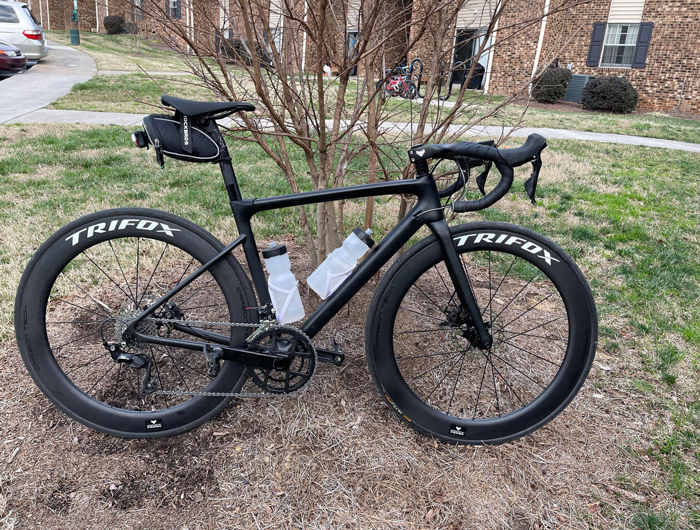
Cycling has evolved significantly over the years, with various bike types catering to different riding styles and terrains. Among these, gravel bikes and road bikes have gained considerable popularity. While they may look similar at first glance, these two types of bikes are designed for distinct purposes and offer unique riding experiences. 1. Purpose and Design Philosophy Road Bikes Road bikes are designed primarily for paved surfaces, including city streets and highways. The focus is on speed, efficiency, and aerodynamic performance. They are ideal for long-distance rides, races, and commuting. Gravel Bikes Gravel bikes, on the other hand, are built to handle a variety of terrains, from smooth pavement to rough gravel roads and trails. They offer versatility and durability, making them suitable for adventure riding, bikepacking, and exploring less-traveled paths. 2. Frame Geometry Road Bikes The geometry of a road bike frame is optimized for speed and aerodynamics. It typically features: Aggressive Riding Position: A lower handlebar height compared to the saddle, promoting an aerodynamic posture.Steeper Angles: The head tube and seat tube angles are steeper, providing quick and responsive handling.Shorter Wheelbase: This results in a more agile bike but can compromise stability on rough terrain. Gravel Bikes Gravel bike frames are designed for comfort and stability over longer, rougher rides. Key features include: Relaxed Riding Position: A slightly higher handlebar height relative to the saddle, offering a more upright and comfortable posture;Slacker Angles: The head tube and seat tube angles are slacker than those of road bikes, enhancing stability;Longer Wheelbase: This provides better control and comfort on uneven surfaces and during longer rides. 3. Tire Clearance and Wheel Size Road Bikes Road bikes generally use 700c wheels with narrower tires (23-32mm). These tires are designed for low rolling resistance and high pressure, optimizing speed on smooth surfaces. The tire clearance on road bikes is limited to accommodate only narrow tires. Gravel Bikes Gravel bikes also typically use 700c wheels, but they are compatible with wider tires (35-50mm). Some models can even use 650b wheels for greater versatility. Wider tires provide better traction, comfort, and puncture resistance on rough and uneven surfaces. Gravel bikes feature larger tire clearance to accommodate these wider tires. 4. Suspension and Comfort Features Road Bikes Most road bikes do not have suspension systems as they are intended for smooth surfaces. Instead, they rely on a stiff frame and fork to maximize power transfer and speed. Gravel Bikes Gravel bikes often incorporate comfort-enhancing features such as: Suspension Forks: Some gravel bikes come with front suspension forks to absorb shocks and vibrations;Thicker Seatposts and Handlebars: Designed to dampen vibrations and improve comfort on rough surfaces;Dropper Seatposts: These allow riders to quickly adjust their saddle height for better control on descents and technical sections. 5. Gearing Road Bikes Road bikes feature gearing systems optimized for high-speed riding on flat and rolling terrain. They typically have close-ratio gearing to maintain consistent cadence and power output. Gravel Bikes Gravel bikes are equipped with a wider range of gears to handle diverse terrains, including steep climbs and loose gravel. They often feature lower gears to make climbing easier and provide better control on technical descents. 6. Handlebar Design Road Bikes Road bikes use drop handlebars designed for an aerodynamic riding position. These handlebars have a shallow drop and narrow width, optimizing speed and efficiency. Gravel Bikes Gravel bikes also use drop handlebars, but they are often flared and wider. This design provides better control and stability on rough terrain and enhances comfort during long rides. 7. Additional Features Gravel bikes often come with additional mounts and eyelets for accessories such as fenders, racks, and extra water bottles. This makes them suitable for bikepacking and long-distance touring. Road bikes typically lack these features, focusing instead on minimizing weight and maximizing speed. Conclusion While gravel bikes and road bikes may appear similar, their design philosophies and intended uses set them apart. Road bikes are built for speed and efficiency on paved surfaces, making them perfect for racing and commuting. Gravel bikes, however, offer versatility and durability for a wide range of terrains, making them ideal for adventure riding and exploring off the beaten path. By understanding these key differences, you can make an informed decision when choosing the right bike for your needs. Whether you're chasing speed on the road or seeking new adventures on gravel paths, there's a perfect bike out there for you.

















